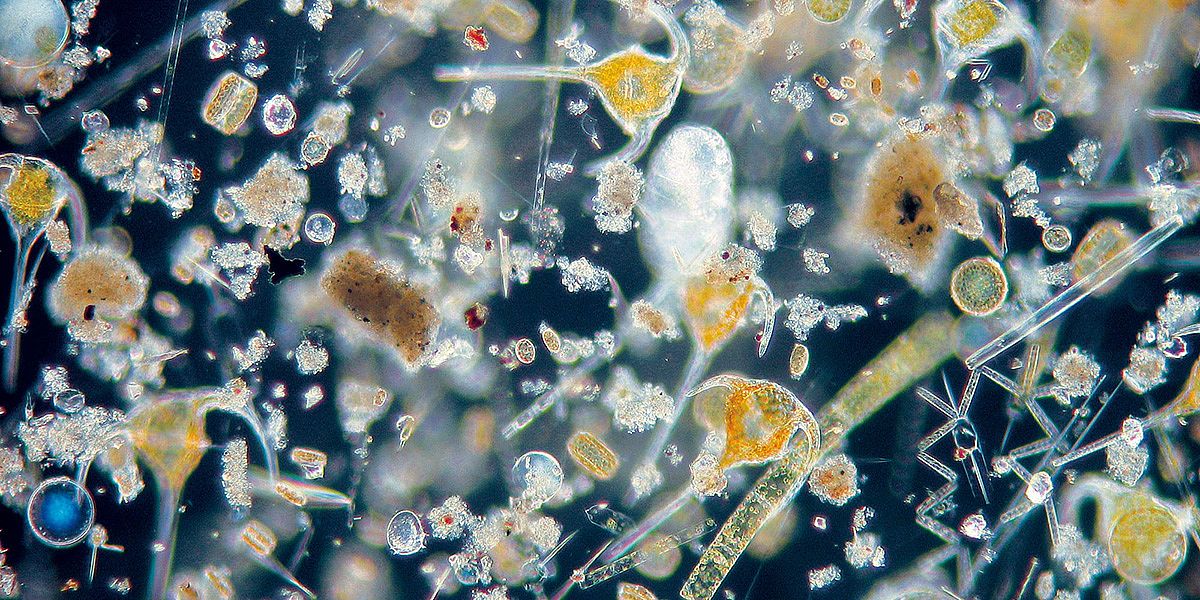The European Research Council (ERC) announced today that two researchers from the GEOMAR Helmholtz Centre for Ocean Research Kiel will each receive a Consolidator Grant of approximately two million euros over five years.
“I am very pleased that this year, two researchers from GEOMAR have received the coveted funding from the European Research Council. I wish Dr. Eleni Anagnostou and Dr. Jan Taucher every success in their exciting investigations on the Antarctic ice sheet and deep-sea research and look forward to the first results,” says Professor Dr. Katja Matthes, Director of GEOMAR. “The awarding of the Consolidator Grants underlines the importance and potential of both research projects and recognises the commitment and expertise of the research teams and GEOMAR.”
HighBorG: Geological Reconstructions of Carbon and Climate Processes
The past holds a wealth of information about the dynamics of carbon and climate. “This is my research playground,” says Dr. Eleni Anagnostou, senior scientist in the Paleooceanography group at GEOMAR. “I look at the Earth’s climate with focus on the carbon cycle when it was warmer than today, millions of years ago, to find the tipping elements that drive the growth and retreat of the Antarctic Ice sheets, and with their understanding to inform future sea level projections.”
Her project, “HighBorG” (High-resolution Boron and beyond Geologic reconstructions for carbon and climate processes), aims to explore previously unknown links between Earth's orbit and variations in temperature, carbon, and sea level when atmospheric carbon dioxide (CO2) was higher than today, but similar to what is expected at the end of this century and in our near future. Specifically, HighBorG targets three distinct climatic periods: a hot Earth with high CO2 levels, 52-46 million years ago (Ma), a less studied period from 39-23 Ma, during which Antarctica was likely fully glaciated, and a colder Earth with high CO2 levels again (17-13 Ma).
Dr Anagnostou and her team will use a combination of chemical tracers in fossil remains of marine organisms that are buried in sediments in the deep sea, with a primary focus on the element Boron and its isotopes, a tool used to reconstruct ocean pH and atmospheric CO2 concentrations. The project utilises established techniques, innovative automation approaches, new marine archives and the application of Earth system models to produce unique geological reconstructions on a millennial scale. Dr Anagnostou says: “This will help us to better understand the interactions within the Earth's climate during periods of glaciation and deglaciation of Antarctica, and so they can contribute to a better understanding of current climate change and improve the quality of climate projections.”
SEA-THROUGH: In Search of the “Ladder” into the Deep Sea
The second funded research project focuses on the ocean depths, the largest but still largely unexplored habitat on our planet. The deep sea harbours a vast biodiversity and is an important reservoir of carbon in the global climate system. The deep layers of the ocean are connected to the surface ocean by the daily migration of plankton: every night, countless small organisms rise from several hundred metres deep to the surface, where there is more food, and then return to the depths during the day. According to a decades-old but unproven theory, this could be just the first step on a “ladder of vertical migrations” that extends to much greater depths. This would result in a series of synchronous and interconnected vertical migrations that extend the food web throughout the water column to depths of several kilometres.
With the SEA-THROUGH project, Dr Jan Taucher and his team aim to unravel this mystery. State-of-the-art camera technology will be used to obtain a comprehensive picture of biodiversity and food webs in the deep sea, particularly with regard to their spatial and temporal dynamics in the water column. “We want to give ourselves a new set of eyes to look into the deep sea,” says Dr Taucher. Since 2018, the marine biologist has been working on the development of innovative camera systems to better observe the wide range of organisms in the ocean. “To understand key ecological mechanisms such as the ‘ladder of vertical migrations’, we first need basic information about the diversity of organisms: who is where, when and what are they doing there? However, collecting such data is quite challenging,” explains Dr Taucher.
To overcome this hurdle, the new project will develop and combine several advanced camera technologies. The new camera system will then be used on shipboard expeditions to make ecological observations of the deep sea and the vertical movement of its inhabitants. Dr Taucher says: “If we can prove the existence of the ‘ladder of vertical migration’, it would be an important piece of the puzzle in solving some of the great mysteries of deep-sea research”.
About the ERC:
The ERC (European Research Council) is an institution of the European Union whose main objective is to support excellent and groundbreaking basic research in Europe. The ERC funds “Starting Grants” for early-stage researchers, “Consolidator Grants” for promising researchers between seven and twelve years after their doctorate whose own research group is in the process of consolidation, “Advanced Grants” for outstanding researchers with proven research expertise, and “Synergy Grants” for teams of researchers working together on a single project. The total budget of the ERC from 2021 to 2027 is more than €16 billion, funded by the EU's research and innovation framework programme “Horizon Europe”.



![[Translate to English:] An ice edge by the sea in the sunshine](/fileadmin/_processed_/4/b/csm_Pressemeldung-Fotos-M-Gutjahr5_99f787b9d0.jpeg)
![[Translate to English:] Many tiny organisms in the water](/fileadmin/_processed_/3/c/csm_PlanktonCommunity-AStuhr_a969254d37.jpg)
